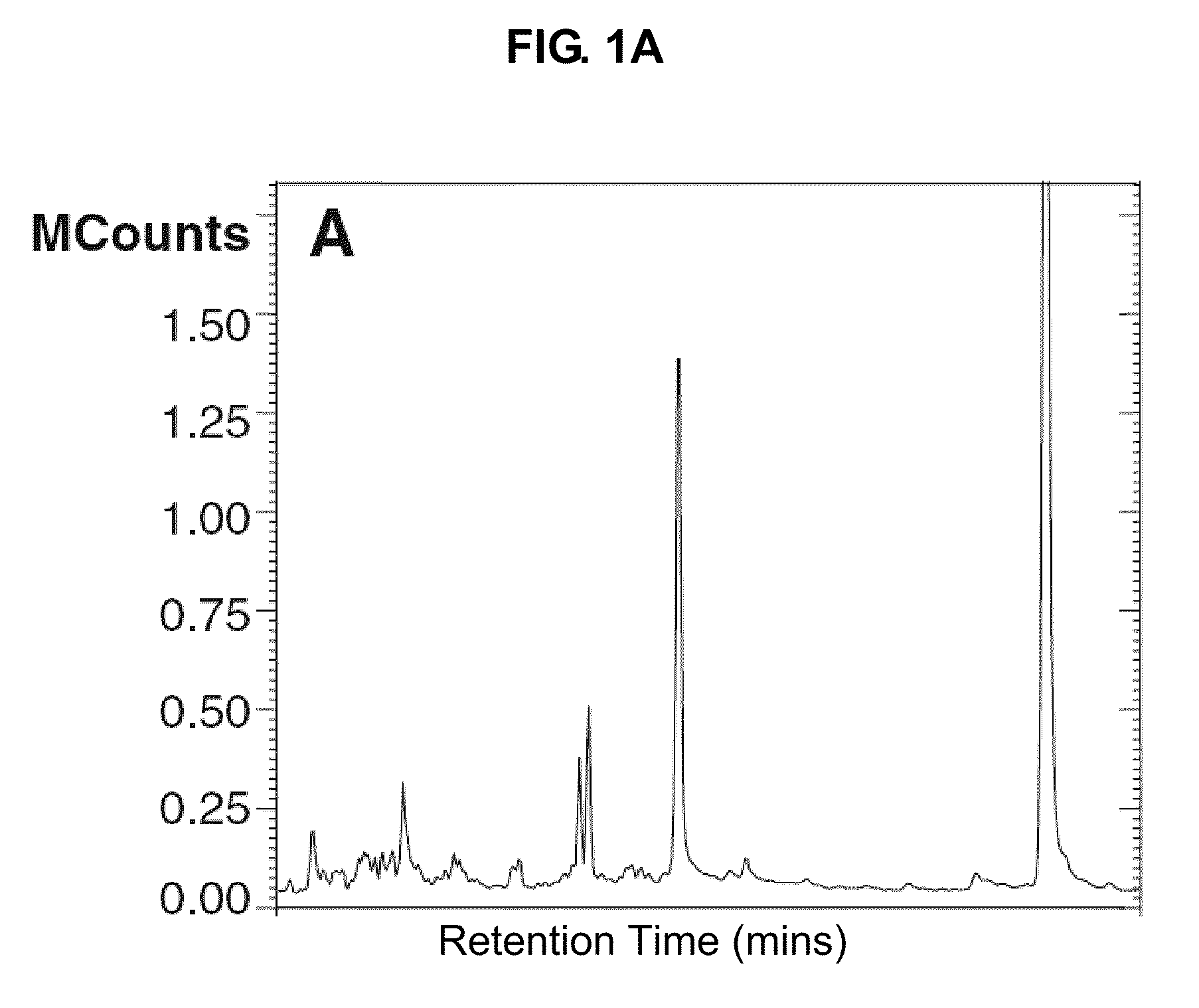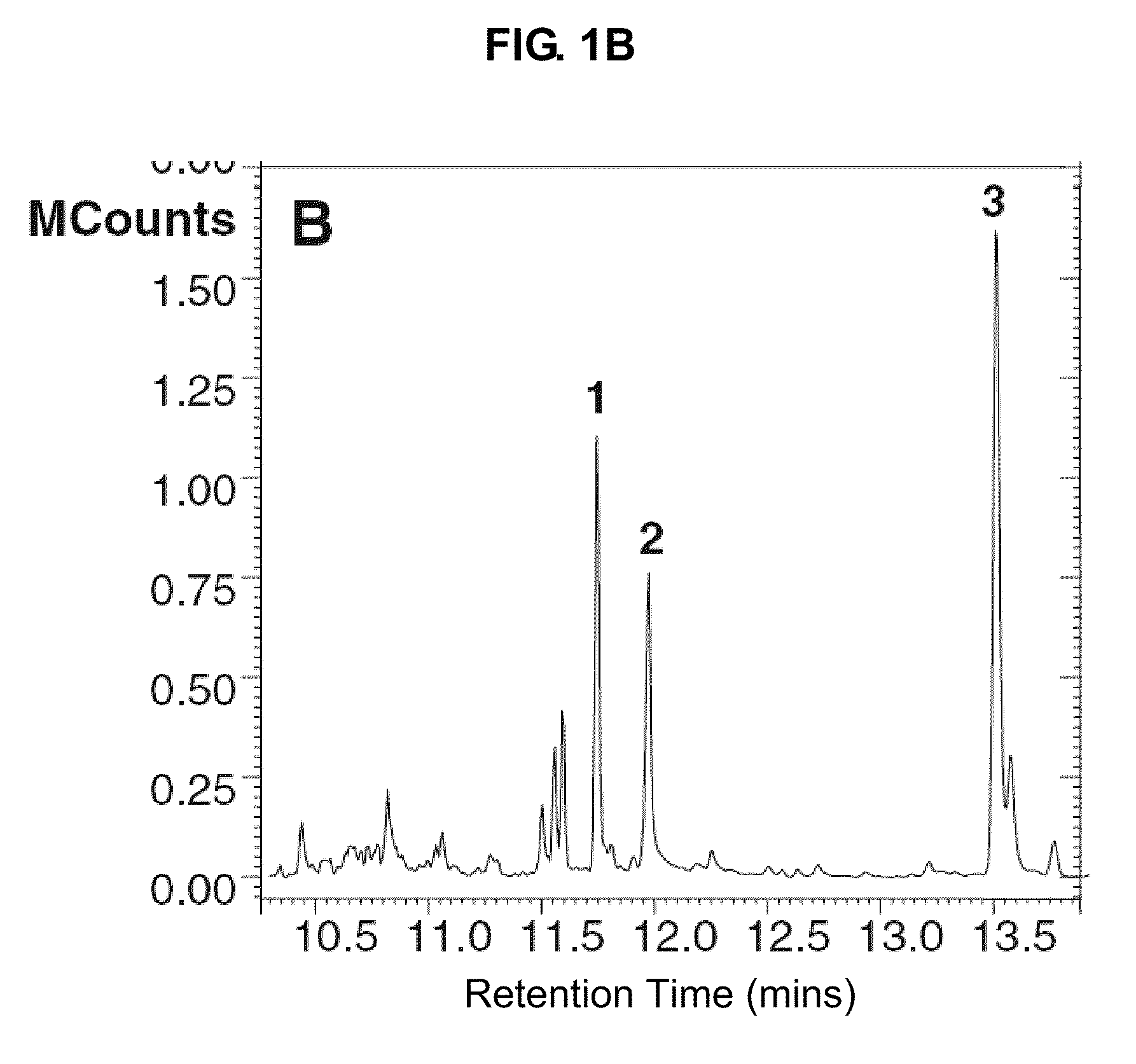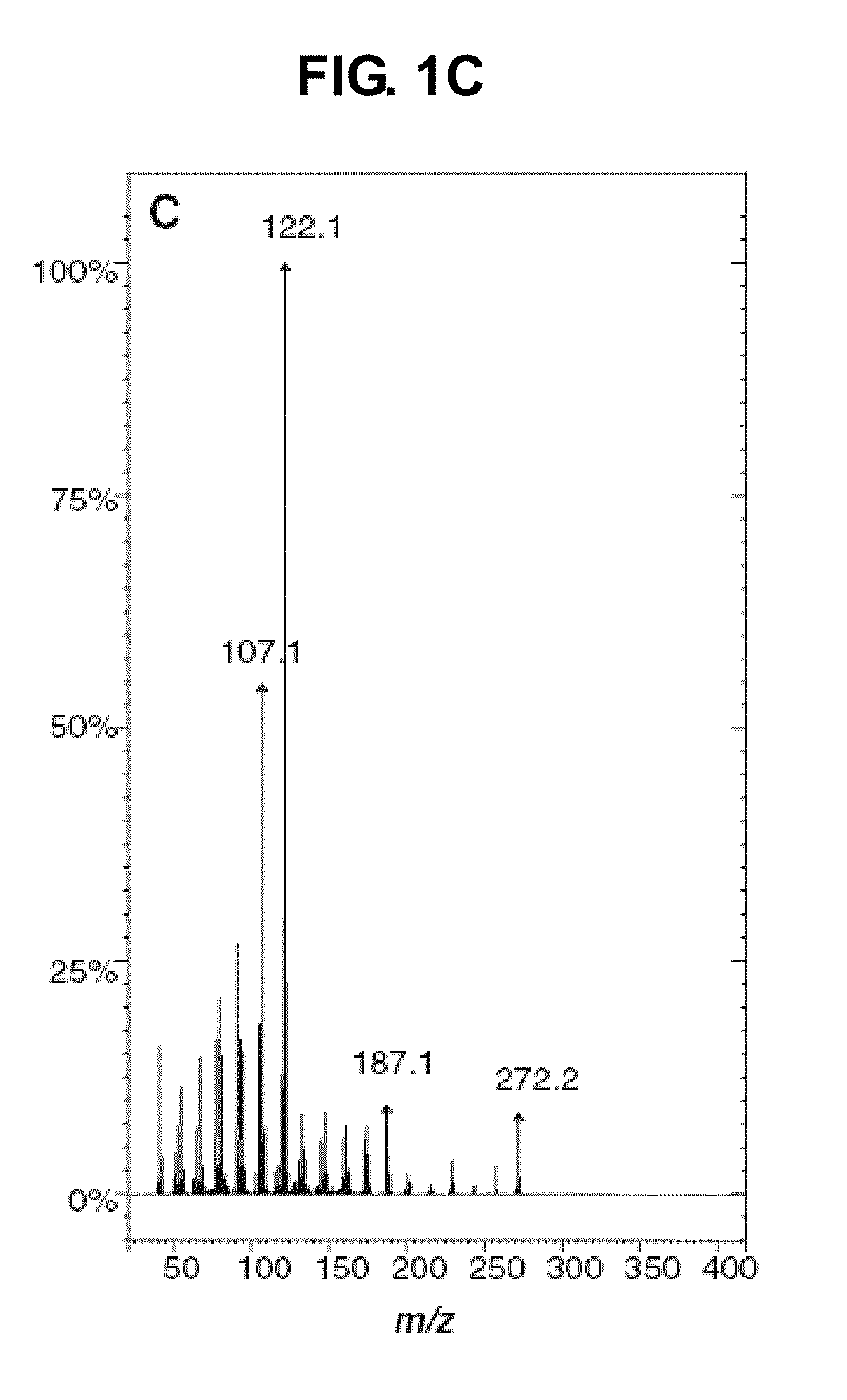Transgenic moss producing terpenoids
- Summary
- Abstract
- Description
- Claims
- Application Information
AI Technical Summary
Benefits of technology
Problems solved by technology
Method used
Image
Examples
example 1
[0134]This example describes transformation of Physcomitrella patens with heterologous taxadiene synthase resulting in production or accumulation of taxadiene in the cultured transformed moss.
[0135]The coding region of taxadiene synthase from Taxus brevifolia was amplified by PCR using oligonucleotides 5′-CACCATGGCTCAGCTCTCATTTAAT-3′ (SEQ ID NO: 203) and 5′-TCATACTTGAATTGGATCAATATAAACTTT-3′ (SEQ ID NO: 204) as primers, and taxadiene synthase cDNA (SEQ ID NO: 1) as template. The amplified product (about 2.6 kb) was gel purified and cloned into a pENTR vector (Invitrogen) via a Topoisomerase-mediated ligation reaction, and then subcloned into an expression vector (pTHUBlgateway, SEQ ID NO: 213, constructed from pGEMT-easy of Promega) via a Gateway LR reaction using LR clonase II, to generate the plasmid pTHUBI:TS. This plasmid placed taxadiene synthase under the control of a ubiquitin promoter.
[0136]After verification of the inserted taxadiene synthase gene in pTHUBI:TS by DNA sequenc...
example 2
[0142]This example describes transformation of Physcomitrella patens with heterologous taxadiene synthase and taxadiene 5-hydroxylase, resulting in production or accumulation of taxadiene and taxadiene-5-ol in the cultured transformed moss.
[0143]Methods are as described in Example 1, unless otherwise indicated. Taxadiene synthase was overexpressed under the control of a ubiquitin promoter. Taxadiene 5-hydroxylase was overexpressed under the control of a 35S promoter.
[0144]The gene taxadiene-5α-hydroxylase (T5H) (SEQ ID NO: 19) was amplified by PCR, cloned into pENTR, and then the pENTR / T5H was transformed into TOP10 E. coli. The pENTR / T5H plasmid was equipped with an antibiotic marker (ampicillin), which was used for screening analysis. Once a suitable colony was identified, it was grown overnight. At this point, the bacteria were concentrated by centrifugation and the plasmid recovered. The T5H gene was then identified using gel electrophoresis and PCR analysis. From here, the T5H ...
example 3
[0148]This example describes analysis of accumulated taxoids in transgenic P. patents expressing heterologous taxadiene synthase and taxadiene 5-hydroxylase.
[0149]Methods are as described in Examples 1-2, unless otherwise indicated.
[0150]An overexpression plasmid harboring the taxadiene-5α-hydroxylase gene (SEQ ID NO: 19) was transformed into the moss P. patens, which already carried the taxadiene synthase gene (SEQ ID NO: 1) from a previous transformation, as described in Example 2. Both genes were stably integrated into the genome and under the control of constitutive promoters (ubiquitin and 35S respectively).
[0151]Stable transformants of P. patens that overexpressed both taxadiene synthase and taxadiene-5α-hydroxylase were analyzed by gas chromatography and mass spectrometry.
[0152]Results showed transgenic mosses produced three taxoids, identified as taxadien-5-ol (as described in Example 2) along with 5(12)-oxa-3(11)-cyclotaxane; taxadien-11-ol; taxadien-18-ol; and taxadien-20-...
PUM
| Property | Measurement | Unit |
|---|---|---|
| Temperature | aaaaa | aaaaa |
| Fraction | aaaaa | aaaaa |
| Fraction | aaaaa | aaaaa |
Abstract
Description
Claims
Application Information
 Login to View More
Login to View More - R&D
- Intellectual Property
- Life Sciences
- Materials
- Tech Scout
- Unparalleled Data Quality
- Higher Quality Content
- 60% Fewer Hallucinations
Browse by: Latest US Patents, China's latest patents, Technical Efficacy Thesaurus, Application Domain, Technology Topic, Popular Technical Reports.
© 2025 PatSnap. All rights reserved.Legal|Privacy policy|Modern Slavery Act Transparency Statement|Sitemap|About US| Contact US: help@patsnap.com



